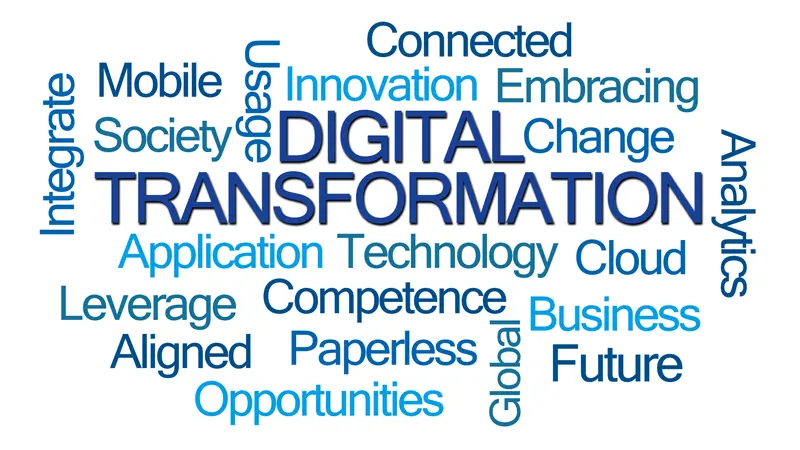Digital transformation is changing the way companies operate. The process involves embracing technology to modernize existing processes, improve workflow efficiency, build agility and increase profitability. As the process of digital transformation is heavily dependent on data precision and accuracy, business firms can take advantage of data entry services to ensure this. Let’s take a closer look at digital transformation, its components, and methods to implement it.
Digital Transformation
The term digital transformation has been in use for many years to describe the transformation of business processes. The concept was introduced by Gartner, Inc and later many organizations adopted this strategy. Digital transformation can increase business efficiency and competitiveness. It has brought about massive changes many areas of a business, from product development to marketing, sales, and customer services. In short, digital transformation can be described as the process of using technology to radically improve the performance or the growth of business.
Technology strategist Dion Hinchcliffe described digital transformation as “moving gracefully from one way of working to an entirely new one, replacing corporate body parts and ways of functioning completely in some cases to capture far more value than was possible using low-scale, low-leverage legacy business.”
Components of Digital Transformation
The process of digital transformation has three components
- Optimizing processes
- Focus on the customer experience (CX)
- Empowering employees
- Optimizing processes: Every business involves various processes and operations which have scope for optimization. In other words, improving the way these processes are handled can make workflows smoother and easier. By advancing IT infrastructure modernization, digital transformation improves organizational efficiency. For business process optimization, the digital transformation strategy must cover all related processes so that the best results achieved.
- Focus on the Customer Experience (CX): With digital transformation, the entire business model is reconstituted with focus on the customer experience. Both structured and unstructured data is analyzed to derive customer insights and needs and improving the customer experience, which can drive business growth. Digital communication channels, such as email, user portals, and digital products transform the way businesses connect with customers and also deliver delivers seamless, intuitive experiences for customers. According to Gartner, more than two-thirds of companies report that they compete mostly on customer experience.
- Empowering employees: This is the third component of digital transformation. The adoption of advanced technologies allows for automation of time-consuming and tedious manual processes, automates reports and streamlines workflow. By freeing up employees from manual tasks, digital transformation allows employees to focus on strategic and innovative initiatives and attain their maximum potential. With access to data analytics, employees can improve performance, increase efficiency and serve customers better.
How to Implement Digital Transformation
Here are the steps to take to implement digital transformation in your business.
Step 1: Identify the major goals
Businesses need to set specific goals for digitization, identify guidelines and have an understanding about the potential end result. In other words, you need to explore the scope for the digital transformation in your business.
Step 2: Manage data
This step is critical for supporting digital transformation. Internal and external data sources have to be harnessed to maximize business intelligence and drive digitization.
Step 3: Create an intuitive data platform
Create and use an intuitive data platform through which you can promote your products and services and deliver them to your consumers.
Step 4: Implement the right technology to drive digital strategies
Technology is at the heart of digital transformation. The cloud drives agility, speed and flexibility, and allows businesses to deliver a better, more improved customer experience. Companies should focus on investing only in technology that can meet their unique needs. Implementing technologies that are unfit for them can cause hassles, and hamper communication and workflow across teams.
Step 5: Ensure compliance
Compliance is a crucial element in digital transformation. Regulations are always changing and businesses need to focus on staying legally compliant to continue operating. The U.S. Small Business Administration (SBA) states that the key areas of compliance businesses should be aware about are: internal requirements, ongoing state filing requirements, licenses, permits, and recertifications, and ongoing federal filing requirements
Benefits of Digital Transformation
The benefits of digital transformation include:
- Increased accuracy and higher productivity
- Agility and efficiency in business operations
- Increases opportunities for growth
- Better customer engagement and satisfaction
- Higher revenue and profits
An experienced outsourcing service provider can support businesses in their digital transformation efforts.




